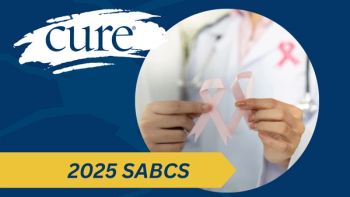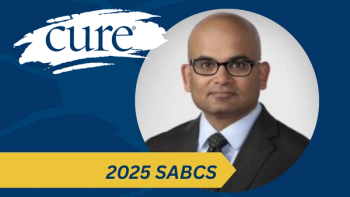
The Basics of Stem Cell Transplantation

Many patients with blood cancers may be candidates for autologous or allogeneic transplant.
Stem cell transplantation has been used to help treat certain cancers for more than 60 years. Most commonly, it’s used for patients with different types of blood cancers, such as leukemia, lymphoma and multiple myeloma.
But how do patients know if it’s the right option for them? And which type is best? These questions can be answered by speaking with experts at a transplant center upon referral from a treating physician, according to Dr. Sergio Giralt, chief of the Adult Bone Marrow Transplant Service at Memorial Sloan Kettering Cancer Center in New York City.
Giralt addressed a group of patients during a Sept. 18 Lunch and Learn hosted by the National Bone Marrow Transplant Link and sponsored by the Leukemia & Lymphoma Society. Also speaking during the hour-long discussion was Jacey Walsh, who is in remission following an acute lymphoblastic leukemia (ALL) diagnosis and undergoing chimeric antigen receptor (CAR)-T cell therapy, a type of immunotherapy, in March.
If a patient is a candidate, the team will then decide which transplant is best. Two options are available, autologous, which uses the patient’s own stem cells, or allogeneic, which involves stem cells that come from a donor, such as a family member who may be a match. If a family match isn’t found, an unrelated donor can be recognized through a registry list.
“Each of us have 10 or 12 HLA proteins that half of them come from your father and half from your mother. If your brother or sister happens to inherit those same types, you have a match within the family,” Giralt said.
Recently, he explained, researchers from Johns Hopkins found a way to conduct transplants using mismatched donors along with the chemotherapy medication cyclophosphamide. “So in 2019, everyone should have a match,” Giralt said.
Five Phases of Stem Cell Transplant
The most common indication for an autologous transplant is multiple myeloma. For allogeneic, it’s acute myeloid leukemia and myelodysplastic syndromes.No matter which transplant a patient receives, the transplant journey is similar, he said. Stem cell transplant comes in five phases. The first phase of the process is conditioning treatment that includes chemotherapy and/or radiation. The dosage will depend on what the health care team feels is appropriate. “This has two purposes. One, get rid of the blood cancer and two, open space for the cells, particularly in the case of a donor transplant,” Giralt said.
The second phase is what they call the low count phase. This is a result of high-doses of chemotherapy and radiation. “The patient’s bone marrow goes down to zero and the cells of the donor or the cells of the patient take 10 to 20 days to recover to normal levels,” he said. During this time, patients may feel tired. They may require blood transfusions, intravenous nutrition and hydration and need careful observation in case of any infections.
Phase three is the transition phase where patients move from daily check-ins with their team to two to three visits a week until their counts recover.
Since the immune system is weak, transplant recipients need to be continuously monitored. This is part of the fourth phase, Giralt said.
And finally, phase five is after the first year when a patient’s immune system is usually strong enough. They will then be revaccinated with the shots received during childhood. “This is the part where patients need to take ownership of their own health care,” Giralt said. “Survivorship care is essential for long-term healthy living.”
Follow good nutrition, maintain a good exercise level and quit tobacco use if they use, he advised. Patients should also watch for cardiovascular disease and keep cholesterol and blood pressure under control.
Turning to CAR-T Cell Therapy
With improvements to stem cell transplant, life threatening conditions have been brought down to less than 15%, Giralt explained.CAR-T cell therapy is another area of advancement for patients with blood cancer. This type of treatment is newer in the cancer space. Only two therapies — Kymriah (tisagenlecleucel) and Yescarta (axicabtagene ciloleucel) — have been approved by the Food and Drug Administration to treat certain adolescent and adult patients. The process involves removing a patient’s T cells from their body, re-engineering them in a lab, then putting them back into the person’s body in hope that these modified T cells will attack the cancer cells.
Walsh received CAR-T cell therapy earlier this year after relapsing several times since her April 2013 ALL diagnosis. She failed two traditional therapies and was accepted into a clinical trial in March at the University of Chicago — close to home. She received her modified T cells on April 4 and is now considered in remission.
Although the therapy is associated with serious side effects, such as cytokine release syndrome and neurotoxicity, the married mother of two didn’t experience them, for which she feels fortunate. A few days after her infusion, she came down with a 104 fever and began to experience confusion. But that subsided within a few days, Walsh said.
“In the hospital, I made sure to walk every day,” she said. “I asked a lot of questions to the doctors and nursing staff because they were really the only ones that I had as a resource to what was going to happen to me.”
Despite success with her CAR-T treatment, Walsh said she still struggles with anxiety over the possibility of her cancer returning — a common concern among many patients and survivors — but has found support through her family, doctors and a therapist.




